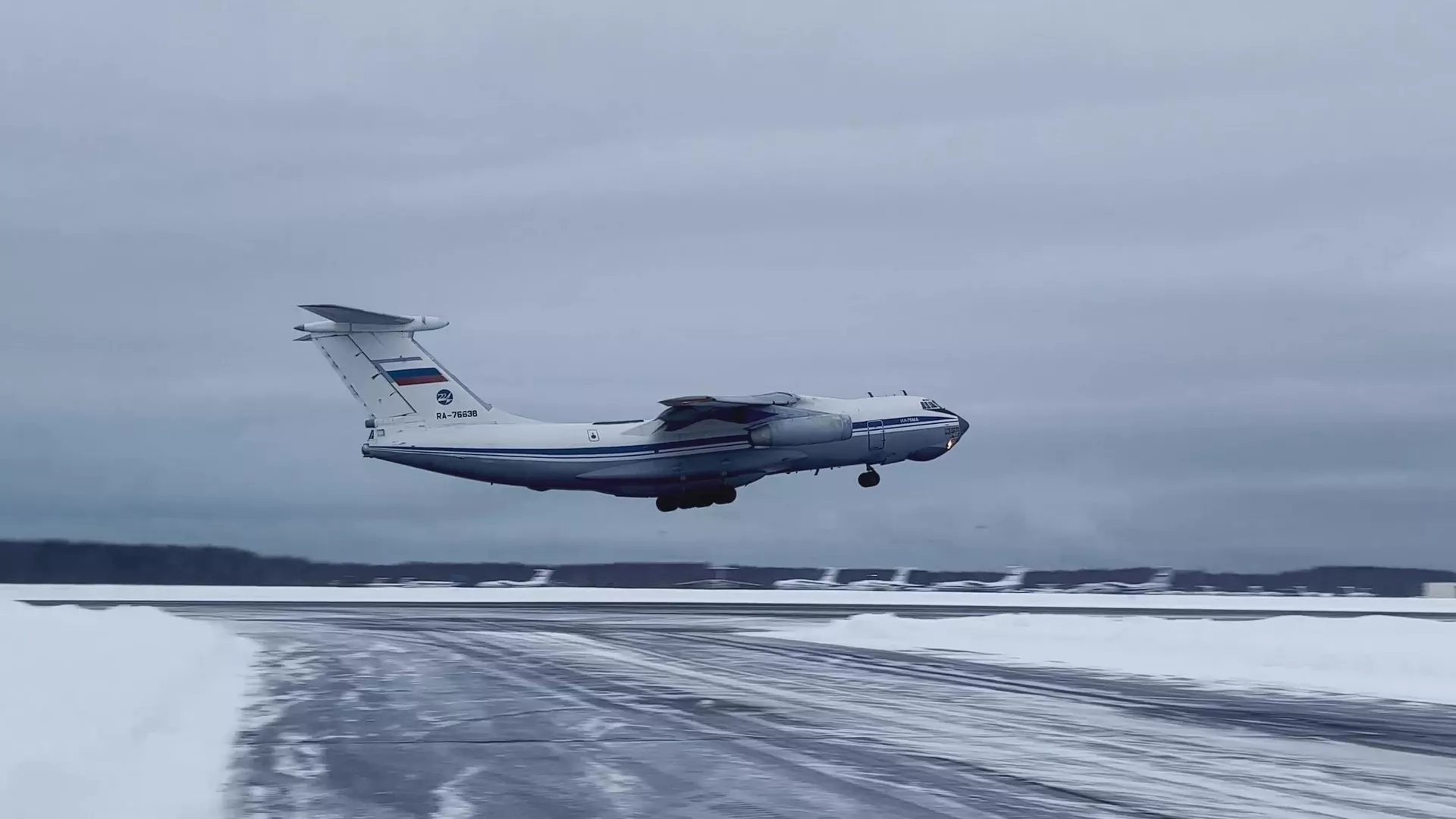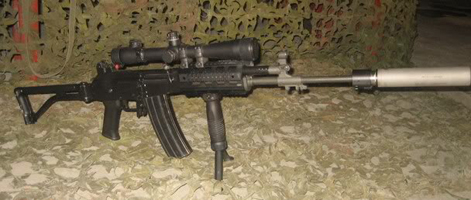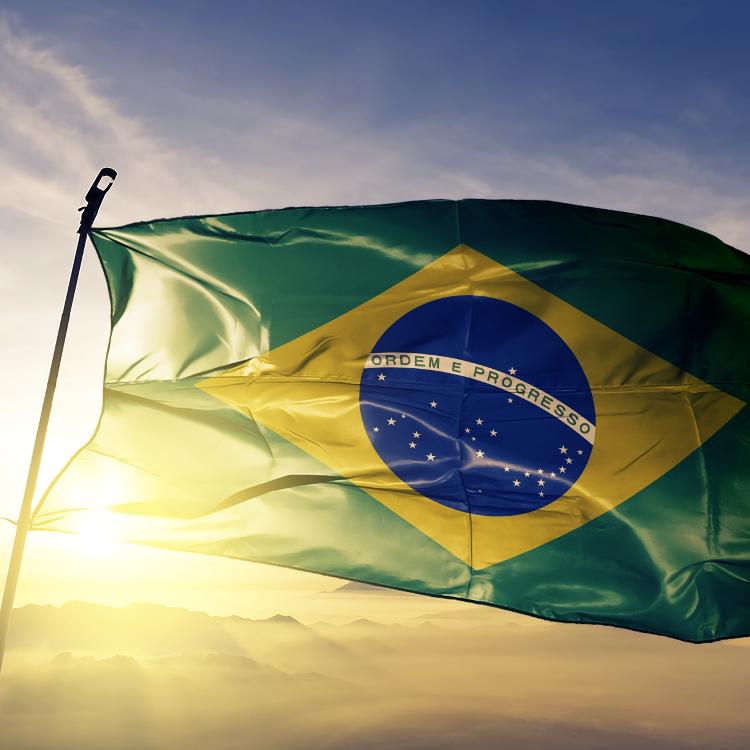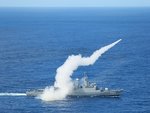UCRÂNIA
Moderador: Conselho de Moderação
- cabeça de martelo
- Sênior

- Mensagens: 39144
- Registrado em: Sex Out 21, 2005 10:45 am
- Localização: Portugal
- Agradeceram: 2775 vezes
- gabriel219
- Sênior

- Mensagens: 13782
- Registrado em: Qui Abr 18, 2013 9:03 am
- Agradeceram: 2365 vezes
Re: UCRÂNIA
Os Russos aproveitaram o tempo péssimo e a falta de FPVs funcionando de ambos os lados e iniciaram uma ofensiva repentina, inclusive rompendo as defesas em Avdiinvka, construídas desde 2014.
- gabriel219
- Sênior

- Mensagens: 13782
- Registrado em: Qui Abr 18, 2013 9:03 am
- Agradeceram: 2365 vezes
Re: UCRÂNIA
A SV e a Wagner continua explorando o gap de drones FPVs deixados pelo mal tempo e avançam em vários setores:
Re: UCRÂNIA
Os russos relataram a construção de fortificações em Adviivka ( mais ou menos 30 km a oeste de Avdiivka), o que de fato evitaria que derrotas tático-operacionais se transformassem em problemas estratégicos. Veremos como isso se corresponderá a uma realidade no terreno. Saiu uma matéria ontem do Telegraph sobre isso:
https://www.telegraph.co.uk/world-news/ ... offensive/
https://www.telegraph.co.uk/world-news/ ... offensive/
Ukraine digs its own Surovikin line against impending Russian offensive
More than 600 miles of new concrete trenches and underground command centres are fortifying Kyiv’s positions
Row upon row of freshly-dug trenches, concrete dragon’s teeth and underground command centres adorn vast expanses of Ukraine’s countryside.
The new fortifications have sprung up along key segments of its more than 621 miles of front as Kyiv’s spluttering counter-offensive turned into what military analysts have described as an “active defence”.
In a signal of a change of posture, president Volodymyr Zelensky late last year announced Ukraine was “significantly enhancing” its fortifications.
Defensive preparations were boosted around the Donetsk towns of Lyman and Avdiivka, as well as Kupiansk in the neighbouring Kharkiv region.
No chances were to be taken, with the construction of fortifications also ordered along the country’s borders with Russia and Belarus, all the way to its frontier with its Western ally Poland.
The new defences closely resemble the so-called “Surovikin line” – the three-layered system of trenches, tank traps and strong-points Russia successfully used to thwart Ukraine’s counter-offensive.
Minefields that plagued Ukraine’s Nato-trained brigades of Western tanks and armoured vehicles have been replicated by Kyiv.
But the Ukrainians face a quandary.
Their defences simply cannot be as rigid along the front lines as the Russian fortifications that stretched from the southern Zaporizhzhia to eastern Donetsk, the main focus of Ukraine’s offensive.
While stronger fortifications would slow down Russian troops, reduce the number of Ukrainian troops needed to defend and mean fewer casualties, it would also diminish Kyiv’s ambition to retake its occupied territory.
Political quandary
“The issue for the Ukrainians is they don’t want to just go static,” said Edward Arnold, of the Royal United Services Institute think tank. “If the lines go static and they don’t move at all, that’s not great from a political point of view.”
This is where the concept of “active defence” comes in for Ukrainian forces: holding the defensive lines while maintaining offensive action in the hope of finding weak spots that could lead to a collapse in the Russian lines.
It was a similar tactic that resulted in the surprise counter-offensive in September 2022 that saw Kyiv liberate swathes of territory in the Kharkiv region from Russian control.
“One of the principles of defence is offensive actions,” Mr Arnold added.
Therefore, the fortifications will become heavier the further you move into Ukrainian-held territory, with the front lines allowed to remain flexible.
Forward defence has been a hallmark of Ukraine’s resistance, refusing to sit back and allow their forces to rest on their laurels.
The aim for 2024 for Ukraine appears to be to replenish their battle-stricken forces and regenerate offensive combat power ahead of next year.
Maintaining a flexible line of defence will enable Ukraine troops to train but also ensure a readiness should an offensive opportunity arise, according to Mr Arnold.
“Static defences are rarely a good idea for militaries, because it sort of fixes your own ability to manoeuvre,” he added.
The skills and fitness of soldiers can easily degrade if they are sat in trenches for too long, especially during Ukraine’s bitter cold winter months.
Deeper into Ukrainian-held territory, fallback positions emerge, consisting of trench networks and new dug-in command centres.
Where the Ukrainians have taken up more static defensive positions, they have placed a series of fortifications less than a mile apart.
“Each fort can defend itself from every direction,” Clement Molin, co-founder of the French Atum Mundi think tank, said. “You have to take all of them to advance.”
Main offensive target
In Avdiivka, currently the main offensive target for Russian forces, Ukraine has positioned its main defensive line some ten miles back.
Here, Ukraine utilises a series of natural barriers of lakes and rivers.
Further back, the city of Pokrovsk, which Russia would have to capture to complete its objective of capturing the entirety of the Donetsk region, is defended by a two-layered trench system running all around the city. It sits around 25 miles from the current front line.
The heaviest of the new defences may be around Chernihiv, the northern region Russia was driven away in the early months of the war.
Kyiv has bolstered its defensive fortifications in the north by 63 per cent, according to a recent report by the Reuters news agency.
Large engineering vehicles have excavated trenches and wide anti-tank ditches along the whole northern zone, which was the direction of one Russian offensive to capture Kyiv.
Rows of dragon’s teeth, concrete structures to block tanks and armoured vehicles, are covered in coils of barbed wire in this area.
While there is no expectation this area will become a new front, the static defences mean Ukraine can deploy the bulk of its forces closer to the action.
Re: UCRÂNIA
In addition to the KN-23 ballistic missiles, North Korea may supply Russia with the KN-25 600mm ultra-long-range MLRS, head of the South Korean Ministry of Defense, Shin Won-sik, said.
“Among the missiles being developed by North Korea, the new ones are the so-called Iskander (KN-23) and the 600mm large-caliber MLRS (NK-25),” he noted, adding that North Korea could supply “dozens” of such systems to Russia.
KN-25 is a North Korean short-range ballistic missile (SRBM) with a demonstrated range of 380 km.
First tested on August 25, 2019, the “super-large” rocket blurs the distinction between multiple-launch rocket systems (MLRS) and short-range ballistic missiles.
Over 50 pieces of Ukrainian artillery were documented around Krinky by the people of
https://lostarmour.info/minusov-net

https://warontherocks.com/2024/01/ukrai ... arratives/
https://insiderpaper.com/ukraine-says-w ... to-russia/UKRAINE’S WAR OF NARRATIVES
It’s now almost two years into Russia’s full-scale war on Ukraine, and if you’re a Ukraine supporter, the past few months have not been encouraging. This summer and fall were meant to be a time of great returns for Ukraine. Amidst much fanfare, Ukraine launched its vaunted summer offensive in June. The campaign, bolstered by a major stockpile of Western-supplied armoured vehicles and ammunition, was meant to deliver a war-changing blow to Russian forces and liberate significant territory. The broad aim was to reach the Azov Sea coast somewhere west of Mariupol, cleaving Russia’s occupation forces in southern Ukraine in two by severing their only land connection. Failing that, Ukrainian generals expected to at least retake the cities of Melitopol and Tokmak.
None of this has happened. For a variety of reasons, discussed at length elsewhere, Ukraine’s counteroffensive fell well short of its goals, capturing only a handful of villages and grinding to a halt without any major territorial gains. The disappointing results were compounded by a spate of negative headlines. These included the return of political infighting to Ukraine, with Kyiv’s mayor Vitaly Klitschko lashing out at President Volodymyr Zelensky and a reported rift emerging between Zelensky and Ukrainian military chief Valery Zaluzhny. Now, Western aid is dwindling. The past three months saw the lowest foreign aid pledges to Ukraine since the war’s start, marked by the failure of the U.S. Congress to pass a much-needed new aid package before the year’s end. There are whispers that Western nations are pressuring Kyiv to launch renewed negotiations with Moscow as the stalemate on the front deepens. Russia, meanwhile, has not only weathered the storm but is back on the attack, its forces launching a series of costly offensives on the fortress town of Avdiivka in the southeastern Donbas.
Put together, the above seems to paint a dire picture for Ukraine and its prospects going forward. But one of the key lessons from watching this war, and the way that it’s covered in the media, is that perceptions can be fickle. Throughout 22 months of conflict, the ironclad conventional wisdom regarding the war’s present state and near future has repeatedly been shattered. By my count, there have been no less than seven major narrative periods of this war, each of which has ended with the script flipping almost entirely. Both Ukraine and Russia have regularly been seen as the conflict’s inevitable victor — only to fall back down to earth when the expectations created failed to live up to reality.
The length of each cycle seems to have expanded as the war itself has gone on and dramatic swings of battlefield fortune have become less common. But the characteristics of each new paradigm have fundamentally remained much the same, and there is every reason to expect more to come.
Sequential Swings
The first major narrative cycle preceded the war itself. In the run-up to the Russian invasion, Russian forces were widely expected to crush Ukraine’s conventional troops in the field. While the potential scope of this initial victory was much debated, there was a broad sense that Russia’s reformed and far better-equipped military would triumph in open battle with Ukrainian forces before proceeding to a costly occupation period. Russia was expected to use its huge advantage in long-range missile capabilities in a “shock and awe” campaign that would decimate much of Ukraine’s military. Alexander Vindman, a former U.S. army officer and analyst on Ukraine, told RFERL in December 2021 that “the advantage is still heavily in Russia’s favor.” If Russia invaded, he thought, its forces would succeed as they had in 2014–15: “the outcome doesn’t really change.” Top U.S. military officials reportedly assessed that Russia could take Kyiv within 72 hours of an assault, while plans for Zelensky to evacuate the capital to the western Ukrainian city of Lviv were also discussed. Even many Ukrainian commanders felt this way. Kyrylo Budanov, the head of Ukraine’s military intelligence, was quoted by the New York Times in mid-December 2021 as stating that Ukraine did not have “sufficient military resources for repelling a full-scale attack by Russian forces” if it did not receive major Western support beforehand. “Believe me, without delivery of [Western] reserves, there’s not an army in the world that can hold out [against Russia],” Budanov stated.
In the event, Ukraine did, of course, hold out. Russia’s poorly planned and executed initial invasion floundered, stalling well short of most of its objectives within days and failing to even surround, let alone take, Kyiv. By early April, Russian forces had withdrawn entirely from northern Ukraine. Images of Russian military incompetence were everywhere, most famously in videos of Russian tanks and other heavy ordnance abandoned and towed off by Ukrainian farmers. Some observers used this to draw sweeping conclusions. The idea that Russia was a state whose military had credibly threatened Europe and NATO countries when it couldn’t even seize Kharkiv, a city 15 kilometers from its borders, now felt ludicrous. If the Russian army couldn’t even properly fuel its tanks, how could it hope to advance even elsewhere in Ukraine?
As the euphoria of the unexpected victories in the war’s opening stages faded, another phase of the war and its perception set in. Having withdrawn its brigades from northern Ukraine in fairly good order, Moscow now refocused its efforts entirely on Ukraine’s eastern Donbas region. Here, Russia would be able to deploy its massive advantage in artillery fires to grind down the Ukrainian army, as demonstrated by its ability to annihilate the town of Popasna before seizing it on May 7. Having spent nearly all of May 2022 in Donbas myself, reporting on the ground and talking to Ukrainian soldiers, the shift in mood was palpable: Soldiers talked about being outgunned and outmanned by as much as “ten to one” and discussed feeling abandoned by the leadership in Kyiv. As Russia’s enormous Soviet-era military stockpile fueled its grinding, relentless, artillery-heavy assaults for months, another perception of the war gained popularity. Russia was simply too large and too resilient to lose this war, its material advantages making any talk of Ukrainian victory “implausible.” Russia’s progress could be only slowed, not stopped, and Western arms for Ukraine would only prolong the inevitable and increase suffering. As Moscow’s troops captured the twin cities of Lysychansk and Severodonetsk, seizing the entirety of Ukraine’s Luhansk oblast as advanced Western military systems continued to be delayed, the mood by late summer 2022 was a dark one.
The next shift was perhaps just as drastic. On Sept. 6, 2022, Ukrainian forces launched a surprise offensive on Russian positions east of the city of Kharkiv. Finding them undermanned and ill-coordinated, Ukrainian troops quickly punched through Russian lines into rear areas, leading to a total rout that saw Ukrainian forces liberate nearly the entirety of Russian-held Kharkiv oblast within days. The revelations of Russia’s manpower issues, with some units operating at less than 30 percent of their intended strength, were followed by a chaotic partial mobilization ordered by Russian President Vladimir Putin just weeks later. Scenes of drunken Russian conscripts brawling at their deployment zones, protests against the mobilization, and another mass exodus of Russians fleeing their country created a sense that Russia was on the verge of collapse, either on the battlefield or internally. The liberation of the city of Kherson — the only Ukrainian provincial capital captured by Russia following their February invasion, and a long-stated Ukrainian goal — only added to the sense of inevitability that the war was now Ukraine’s to lose. Some analysts began to talk of the war being over by Christmas, and others talked of at least reaching the Crimean peninsula within a few months. The convergence of these factors was intoxicating on social media and felt like it would not be reversed.
This, too, did not last. Now, it was Ukraine’s turn to fall short of supplies, with ammunition in particular running down. Hopes of a Ukrainian winter offensive to seize the key Donbas junction town of Kreminna did not materialize, as Ukrainian forces ran low on artillery shells. Mobilized Russian conscripts began to reach the battlefield in large numbers, stymying the Ukrainian advance and plugging the holes in Russian lines. It was at this time that the single longest and deadliest battle of the entire war played out: the siege of Bakhmut. Russian forces, led by Wagner Group mercenaries, began the systematic destruction of the city, punching through with endless waves of convicts as Ukrainian forces struggled to hold out. The slow but steady advance through the city, from winter 2022 until its full capture in May 2023, renewed the atmosphere of pessimism that characterized Russia’s 2022 summer Donbas offensive. Alongside this came yet another spate of pieces arguing that Ukraine must make peace with Russia while it still could, and that a negotiated settlement to end the fighting was necessary. Western weapons had not won the war yet for Ukraine, people claimed, and it was thus high time to realize that a Russian defeat was impossible.
During the desperate defense of Bakhmut, Ukraine and its Western partners were not idle. They had instead spent the interim training and equipping a number of new brigades that were to use Western-supplied main battle tanks and armored vehicles in a sweeping counteroffensive that would liberate large swathes of territory. Ukrainian officials did not shy away from buoying expectations to lofty heights: Mykhailo Podolyak, one of Zelensky’s top advisors, stated in April that Ukraine would “return [liberate] Crimea within five to seven months.” Some social media commentators posited that Ukraine could simply use bulldozers to plow over Russian trenches, as U.S. forces had done in Kuwait and Iraq during Operation Desert Storm. Others announced that the coming counteroffensive would “rewrite military history.” Even as the offensive ground on for months, with its gains measured in tree lines, many analysts continued to insist that the campaign was succeeding. Ukraine would not come close to achieving its minimum goals in the offensive — the city of Tokmak, as stated by Ukrainian general Oleksandr Tarnavsky — but this was often hard to discern from the infallible optimism seen across much of social media.
Now, as the counteroffensive’s failings are broadly discussed, the pendulum has swung back toward pessimism once again. The paucity of territorial gains, amplified in many ways by the lofty expectations heading into the campaign, led to yet another cycle of articles and headlines suggesting the dour inevitability of a Russian victory in the conflict. With Russian lines having failed to collapse, the popular talk is now about fading Western support, Ukrainian political disunity and behind-the-scenes pushes for Zelensky to accept the reality on the ground. Another round of articles about the necessity of negotiations have emerged, while pundits on the pro-Russian side have again claimed that Ukraine and the West are headed for certain defeat.
Conclusion
By this stage, one can almost imagine how the next paragraph of this article would read six months from now: Russia’s newest reverse, whiplash in the Western media, optimism about Putin’s imminent fall. Perceptions of this conflict have largely been defined by overcorrections, as mercurial audiences and headline writers seek the latest eye-catching takes. But the reality of the Russian-Ukrainian war — as with most major interstate conflicts — has been a much more nuanced affair. While significant events like the capture of a city or the defection of a mercenary group can be startling and encourage expectations of more of the same, observers of this war are better served by resisting the temptation to extrapolate too broadly about what comes next. Topics like artillery shell production and military recruitment numbers might be less captivating, but the underlying factors in any conflict of this scale are usually more impactful than the headline news. The pace of developments may slowing after its bombastic first year, as the battlefield approaches something resembling stalemate. Nonetheless, the course of the conflict to date suggests that another next major shift in narrative is all too likely — even if it takes a bit longer to materialize.
One of the key takeaways from reviewing these narrative cycles is that not all observers are equally reliable. While coverage in the media, and especially social media, has often made the outcome of this conflict appear inevitable, the analyst community has largely worked to avoid this. Both military and political analysts commentating on the war have consistently couched their insights with many layers of caveats, emphasizing that anything with as many inputs and moving parts as the 21st century’s largest interstate conflict are exceedingly difficult to predict. This has led to a much more robust record on their part, albeit one that’s inherently less attractive in our contemporary global media environment than more bombastic predictions. Social media in particular is not well-suited to such nuance: Long threads of analysis with many provisions and stipulations guiding their takeaways rarely, if ever, outperform similar posts promising grand victories or crushing defeats for one side. Given the nature of social media, this is unlikely to change anytime soon, but readers will hopefully grow more savvy.
In reviewing these many reversals, I certainly don’t intend to claim that I had more foresight than other observers. Many of the above assumptions did feel overwhelmingly convincing. I, for one, thought the seemingly perfect storm of Russian battlefield reverses and internal chaos in fall 2022 would be nearly impossible for Putin to overcome. Yet if there is one lesson this war should have taught us, it is that no present reality or narrative is nearly as solid as it seems. The nature of the conflict means that at any time, a coherent and well-argued piece can be written explaining why defeat is imminent for either of the sides. And yet this has yet to happen. Both at the present, with Ukraine on the back foot, and when Ukraine is ascendant again in the near future, we would all do well to moderate our predictions of what’s next.
Ucrânia diz que Ocidente deve suspender o fornecimento de peças de armas à Rússia
https://edition.cnn.com/2024/01/19/poli ... index.html
Grim realization sets in over state of Ukraine war as funding fight continues in Washington
https://www.politico.eu/article/vladimi ... rius-nato/The cycle of flight tests of the budget analog of the Geranium kamikaze jet drone is being completed; work on the Yastreb project is planned to be completed in the first half of 2024, the TASS agency reports, citing the press service of the Stratim design bureau.
“The jet analog of the small Geranium is called the Yastreb, the product is currently under development. This is a flying wing with coordinated guidance, hitting objects at a distance of up to 350 km.
We are completing the cycle of flight tests of the prototype, then we will slightly redesign the larger prototype and begin its flight tests. It is planned to move to the finished product stage in the first half of this year. "The Yastreb will also be used as a pseudo-cruise missile - a decoy target to divert enemy air defense systems."
Putin could attack NATO in ‘5 to 8 years,’ German defense minister warns
Vídeos sobre a produção militar na Rússia e a análise da fabricação de tanques russos
https://cnnportugal.iol.pt/guerra/ucran ... 1fc0bc374b
Imagens aéreas comprovam carregamentos da Rússia na Coreia do Norte. ONU investiga venda de armas
https://cnnportugal.iol.pt/guerra/ucran ... 1fc0bc27a3
"Defesa ativa". Este é o plano da Ucrânia para sobreviver em 2024
https://www.csis.org/analysis/out-stock ... e-industry
Out of Stock? Assessing the Impact of Sanctions on Russia’s Defense Industry
https://csis-website-prod.s3.amazonaws. ... bpjNnfeJi8
Uma análise do CSIS sobre a BID russa e o impacto das sanções na produção de armamento russo
https://cnnportugal.iol.pt/videos/ratos ... ca9367ec7e
Ratos, ratos, ratos. Em todas as trincheiras da Ucrânia: nem gatos nem veneno dão cabo deles
- cabeça de martelo
- Sênior

- Mensagens: 39144
- Registrado em: Sex Out 21, 2005 10:45 am
- Localização: Portugal
- Agradeceram: 2775 vezes
- gabriel219
- Sênior

- Mensagens: 13782
- Registrado em: Qui Abr 18, 2013 9:03 am
- Agradeceram: 2365 vezes
Re: UCRÂNIA
Ao que tudo indica, Avdiinvka cairá antes do fim de Fevereiro. Os Russos iniciaram algumas ofensivas inesperadas, como contra Bilohorivka.
- gabriel219
- Sênior

- Mensagens: 13782
- Registrado em: Qui Abr 18, 2013 9:03 am
- Agradeceram: 2365 vezes
Re: UCRÂNIA
Está ficando cada vez mais claro pra mim que a melhor arma da AFU, de todas, não é HIMARS, Storm Shadow ou Leopards, mas sim os drones FPVs e tubos de artilharia. O tempo está ruim, mas se estabilizando, porém estava quase proibitivo o uso de drones FPVs pelos Ukras e os Russos - tanto a SV quanto a dupla Wagner/1AK - se aproveitaram disso e lançaram uma ofensiva muito bem sucedida até aqui.
Além disso, tropas Russas avançaram contra Kharkiv através da fronteira, tomando um vilarejo, mas sem confirmação ainda. Seria, talvez, um início de uma nova ofensiva contra Kharkiv ou podem ser Destacamentos de Assalto explorando gaps na região.
Além disso, tropas Russas avançaram contra Kharkiv através da fronteira, tomando um vilarejo, mas sem confirmação ainda. Seria, talvez, um início de uma nova ofensiva contra Kharkiv ou podem ser Destacamentos de Assalto explorando gaps na região.
Re: UCRÂNIA
A AFU parece estar com problemas de mão de obra. Parece um caso muito sério. O pior é que mesmo que eles aprovem a mobilização, precisa-se acompanhar se serão jogados já na linha de frente assim que fossem mobilizados pra manter as posições, porque a ordem para isso é política, apesar de isso não fazer nenhum sentido militar. Pra piorar, há atrito entre Zelensky e Zaluzhnyi, o comandante ucraniano parece bem mais disposto a tomar as decisões militares coerentes, mas Zelensky é que está piorando tudo, por isso, existe a teoria de que o gabinete de Zelensky quer trocar Zaluzhnyi por Budanov, pq este último é um fanático igual ao seu presidente e quer manter a AFU preso na ofensiva que só irá desgastar ainda mais suas unidades, não toa que o prefeito de Kiev, o Klitschko, já está criticando Zelensky chamando-o de autoritário.
- gabriel219
- Sênior

- Mensagens: 13782
- Registrado em: Qui Abr 18, 2013 9:03 am
- Agradeceram: 2365 vezes
Re: UCRÂNIA
Acredito que Zaluzhnyi já esteja sendo cogitado como solução para o Zelensky, se os Russos forem bem sucedidos nessa Ofensiva de Inverno.
- knigh7
- Sênior

- Mensagens: 18550
- Registrado em: Ter Nov 06, 2007 12:54 am
- Localização: S J do Rio Preto-SP
- Agradeceram: 2393 vezes
- mauri
- Sênior

- Mensagens: 964
- Registrado em: Dom Jul 17, 2005 7:35 pm
- Localização: Fortaleza
- Agradeceram: 87 vezes
Re: UCRÂNIA
Um avião de transporte militar Il-76 da Força Aeroespacial da Rússia caiu hoje na região de Belgorod

De acordo com a entidade militar russa, o avião que caiu transportava 65 prisioneiros ucranianos destinados à troca, seis tripulantes e três acompanhantes.
"Em 24 de janeiro, por volta das 11h00 no horário de Moscou [05h00 horário de Brasília] caiu na região de Belgorod um avião Il-76 durante um voo programado", aponta o comunicado.

De acordo com a entidade militar russa, o avião que caiu transportava 65 prisioneiros ucranianos destinados à troca, seis tripulantes e três acompanhantes.
"Em 24 de janeiro, por volta das 11h00 no horário de Moscou [05h00 horário de Brasília] caiu na região de Belgorod um avião Il-76 durante um voo programado", aponta o comunicado.
- gabriel219
- Sênior

- Mensagens: 13782
- Registrado em: Qui Abr 18, 2013 9:03 am
- Agradeceram: 2365 vezes
Re: UCRÂNIA
A queda desse Il-76 está dando o que falar, pois a Rússia havia informado a Ucrânia - inclusive até Alemanha e EUA - e a aeronave teria sido atingida por três mísseis AAe. A aeronave foi deliberadamente derrubada e se os Ucranianos fizeram isso, junto com o episódio dos bombardeios em Belgorod e Donetsk pegando bem mal até agora, parece que a EU e a OTAN arranjaram a desculpa perfeita pra justificar o que já andam fazendo: tirando o deles da Ucrânia e cantando vitória. Hoje cedo, vários Ukras estavam comemorando que o Il-76 estava transportando paraquedistas Russos e depois virou S-300, agora que foi relevado que transportavam POWs, editaram ou estão excluindo os posts, inclusive foi revelado a lista da GUR e o mais novo nasceu em 2002:
Outros:
he Main Intelligence Directorate of the Armed Forces of Ukraine finally confirmed that an exchange of prisoners between Russia and Ukraine was being prepared today
“I can state that the exchange planned for today is not yet taking place,” said Andrei Yusov, a representative of the main intelligence department of Ukraine, after 2.5 hours of silence.
He added that the information voiced by Russia about the death of prisoners of war on the Il-76 plane is now being verified.
Outros:
Re: UCRÂNIA
É bem possível ter sido alvo dos SAMs ucranianos. Uma coisa revelada pelos russos que não dá para confirmar, eles afirmam que tinham 13 Azov na aeronave:
- cabeça de martelo
- Sênior

- Mensagens: 39144
- Registrado em: Sex Out 21, 2005 10:45 am
- Localização: Portugal
- Agradeceram: 2775 vezes
Re: UCRÂNIA
Uma pergunta, quantas vezes é que a Rússia transportou prisioneiros Ucranianos de avião para a troca de prisioneiros? É que sempre que leio sobre isso ou eles vêm de comboio ou de camião, nunca de avião.gabriel219 escreveu: ↑Qua Jan 24, 2024 9:50 am A queda desse Il-76 está dando o que falar, pois a Rússia havia informado a Ucrânia - inclusive até Alemanha e EUA - e a aeronave teria sido atingida por três mísseis AAe. A aeronave foi deliberadamente derrubada e se os Ucranianos fizeram isso, junto com o episódio dos bombardeios em Belgorod e Donetsk pegando bem mal até agora, parece que a EU e a OTAN arranjaram a desculpa perfeita pra justificar o que já andam fazendo: tirando o deles da Ucrânia e cantando vitória. Hoje cedo, vários Ukras estavam comemorando que o Il-76 estava transportando paraquedistas Russos e depois virou S-300, agora que foi relevado que transportavam POWs, editaram ou estão excluindo os posts, inclusive foi revelado a lista da GUR e o mais novo nasceu em 2002:
he Main Intelligence Directorate of the Armed Forces of Ukraine finally confirmed that an exchange of prisoners between Russia and Ukraine was being prepared today
“I can state that the exchange planned for today is not yet taking place,” said Andrei Yusov, a representative of the main intelligence department of Ukraine, after 2.5 hours of silence.
He added that the information voiced by Russia about the death of prisoners of war on the Il-76 plane is now being verified.
Outros:






